My dear Readers,
There is something wonderful to report directly from my green heart, the Great Garden. After almost 4 years, the two groups of figures "Hercules with the Boy Telephos" and "Silen with the Boy Bacchus" are finally back. The two marble copies, elaborately created by the sculptors Stefan Dürre and Frank Schauseil, now once again flank the entrance to the Great Palace on the city side in dazzling white and can be easily recognised from a distance. The sculptural groups were created using the traditional stippling technique. Like the 18th century copies of antiquities by the French sculptor Pierre L'Estache, these copies are also made of Carrara marble.
marble.
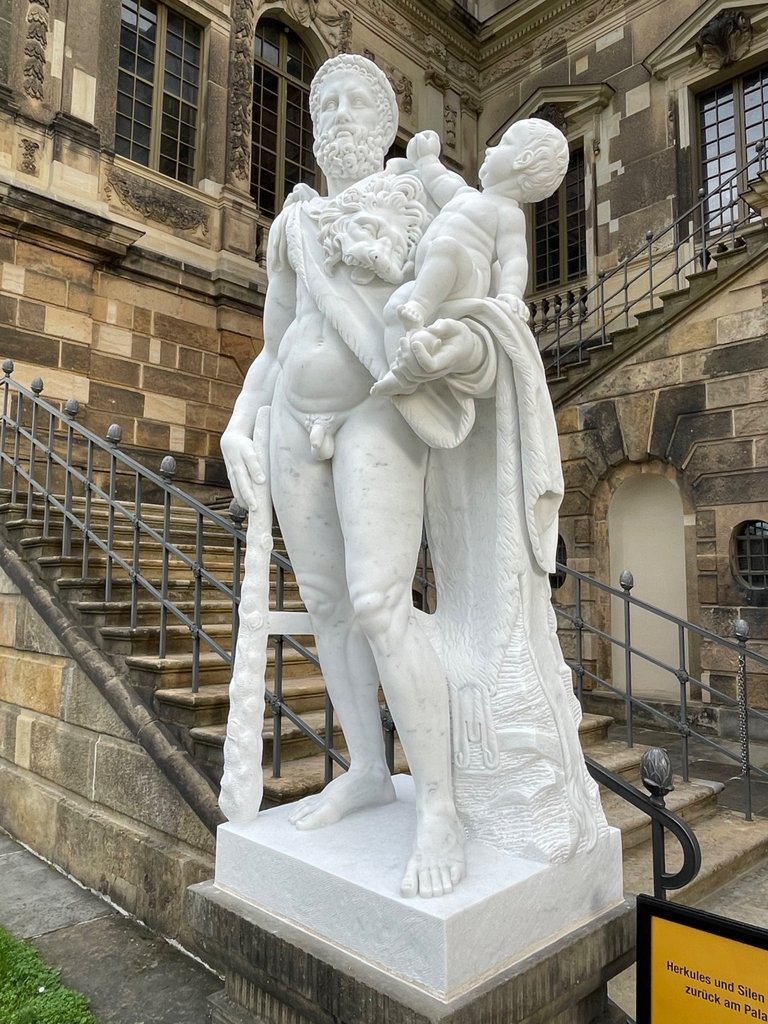 | 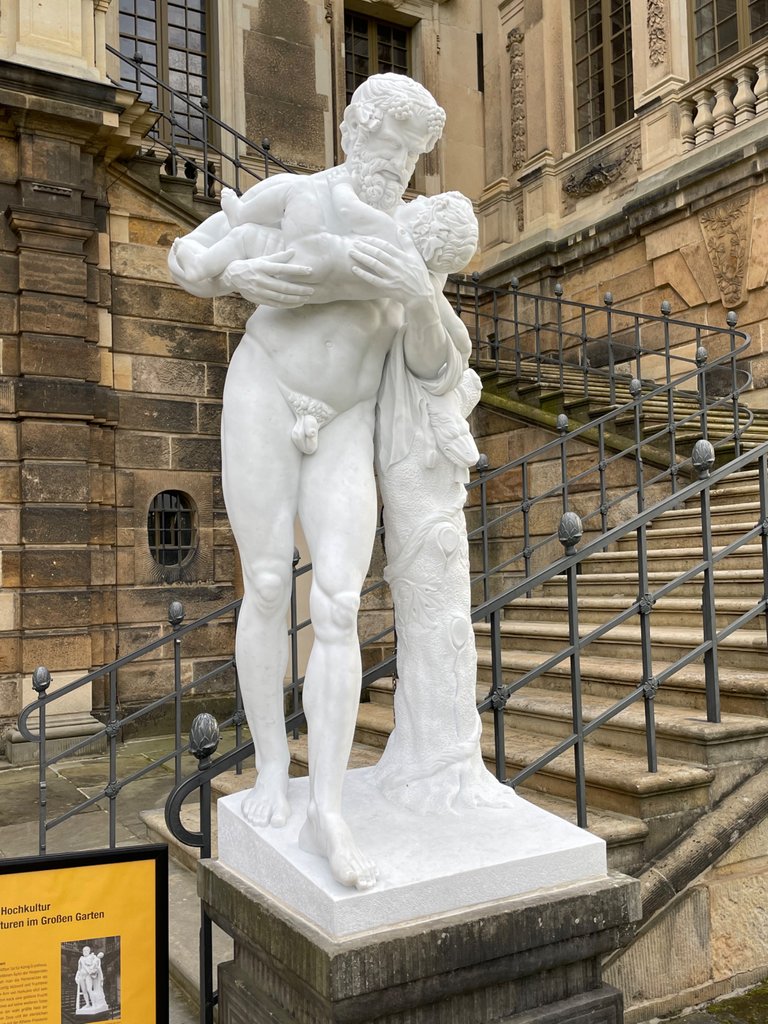 |
The re-creation according to the antique model was an elaborate process, for it was the Dresden artist André Zehrfeld who produced plaster casts of the two antique copies last restored in 1991/1992. The two sculptors then removed more recent additions and reconstructed the two sculptures according to historical sources. Many weathered areas on the L'Estache copies also had to be redesigned accordingly on the plaster models. The modelling work took about a year. The total costs for the two marble copies, including materials, preliminary examinations, moulding, securing the originals, etc., amounted to approximately 440,000 euros.
Hercules with the telephosis boy
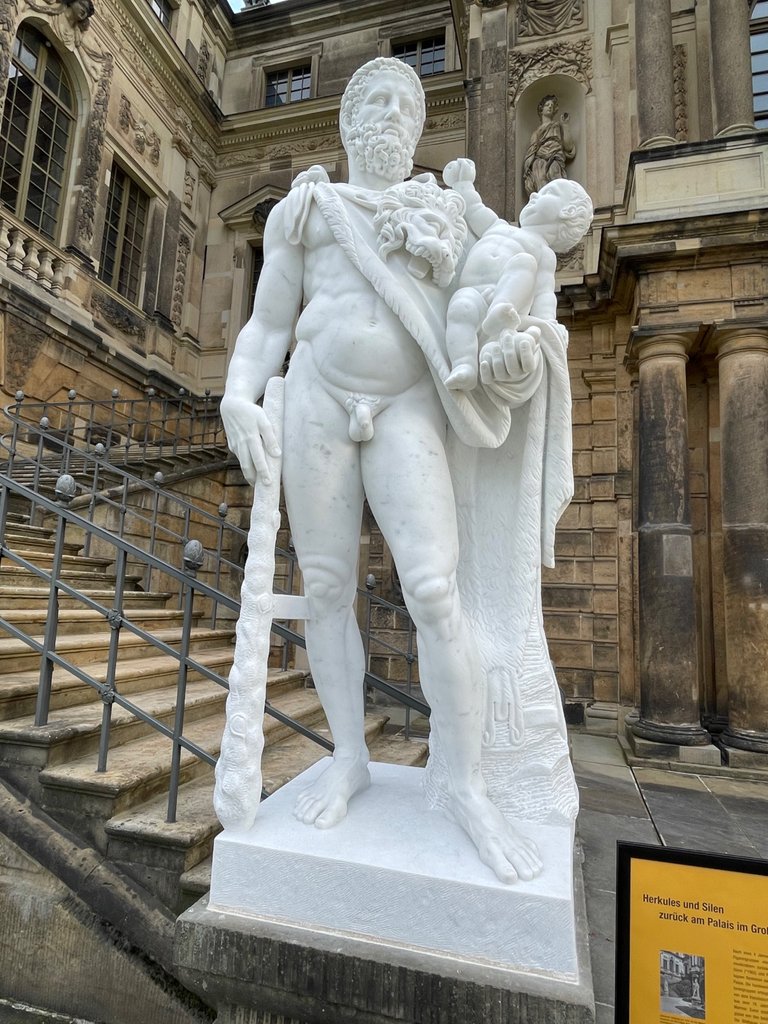
Hercules stands at rest after his twelfth deed for King Erystheus. He has brought the golden apples of the Hesperides from the Garden of Paradise. Very early on, the Pomeranians were seen as the coveted fruit, which both blossomed and fruited and stood for eternal life. On the arm of Hercules sits his lively son Telephos, boldly holding out a golden fruit to him. The lion's skin and club are two attributes that refer to his further deeds. Hercules was probably the greatest hero of ancient Athenian times and, as the son of Zeus and the mortal Alcmene, a demigod. Telephos was his son conceived with the Athenian priestess Auge.
Silen with the Bacchus Boy
The satyr Silen was the educator and teacher of Dionysus, the god of intoxication and wine.
god of intoxication and wine. He is a son of Zeus with
the harvest goddess Demeter. Inwardly and sensitively Silen holds the
the wriggling boy. His exuberance already points to
later wildness. He cheekily grasps the beard of the educator who is
looking down on the child.
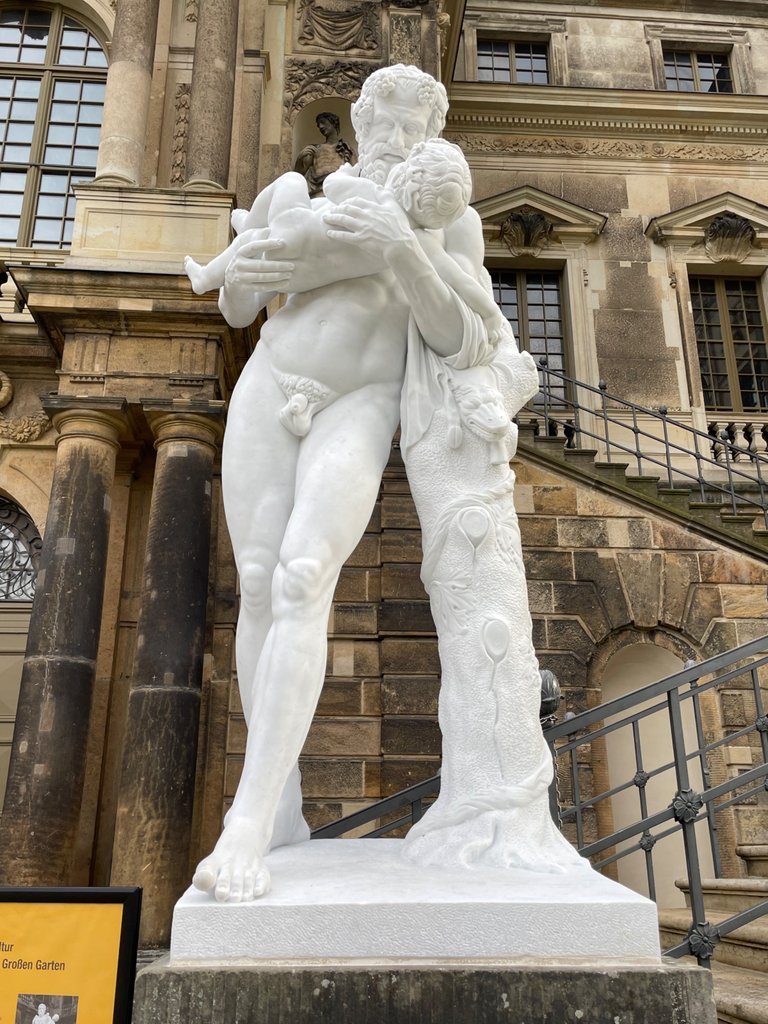
I am extremely pleased that my historical beauty is returning bit by bit. With every year, works of art and buildings from my heyday return to the places where I know and appreciate them. Come and visit me and let yourself be inspired!
Verehrte Leserschaft,
Es gibt etwas wunderbares direkt aus meinem grünen Herzen, dem Großen Garten zu berichten. Nach nunmehr fast 4 Jahren sind endlich die beiden nach antikem Vorbild gestalteten Figurengruppen »Herkules mit Telephosknaben« sowie »Silen mit Bacchusknaben« zurück. Die beiden von den Bildhauern Stefan Dürre und Frank Schauseil aufwendig erstellte Marmorkopien flankieren nun wieder eindrucksvoll und bereits aus der Ferne gut zu erkenn in blendendem weiß den stadtseitigen Zugang zum Großen Palais. Die handwerklich anspruchsvolle Anfertigung der jeweiligen Skulpturengruppen erfolgte im traditionellen Punktierverfahren. Wie bereits die von dem französischen Bildhauer Pierre L'Estache erstellten Antikenkopien aus dem 18. Jahrhundert bestehen auch diese Kopien aus Carrara-
Marmor.
 |  |
Die Neuerschaffung nach antikem Vorbild war ein aufwendiger Prozess, denn war zuvor stellte der Dresdner Kunstformer André Zehrfeld Gipsabgüsse von den beiden zuletzt 1991/1992 restaurierten Antikenkopien her. Die beiden Bildhauer entfernten dann jüngere Ergänzungen und rekonstruierten die beiden Plastiken nach nach historischen Quellen. Auch viele an den L'Estache-kopien verwitterten Bereiche mussten an den Gipsmodellen entsprechend nachgestaltet werden. Die Modellbauarbeiten dauerten zirka ein Jahr. Die Gesamtkosten für die beiden Marmorkopien, einschließlich Material, Voruntersuchungen, Abformungen, Sicherung der Originale etc. betrugen ca. 440.000 Euro.
Herkules mit dem Telephosknaben

Herkules steht ruhend nach seiner zwölften Tat für König Erystheus. Aus dem Paradiesgarten hat er die Goldenen Äpfel der Hesperiden herbei gebracht. Schon sehr früh sah man die Pomeranzen als die begehrten Früchte an, die gleichzeitig blühend und fruchtend für das ewige Leben stehen. Auf dem Arm von Herkules sitzt sein quirliger Sohn Telephos und streckt ihm keck eine goldene Frucht entgegen. Löwenfell und Keule sind zwei auf seine weiteren Taten verweisenden Attribute. Herkules war der wohl größte Held der ariechischen Antike und als Sohn von Zeus und der sterblichen Alkmene ein Halbgott. Telephos war sein mit der Athene-Priesterin Auge gezeugter Sohn.
Silen mit dem Bacchusknaben
Der Satyr Silen war der Erzieher und Lehrer des Dionysos, dem
Gott des Rausches und des Weins. Er ist ein Sohn des Zeus mit
der Ernte-Göttin Demeter. Inniglich und sensibel hält Silen den
zappelnden Knaben. Seine Ausgelassenheit verweist schon auf
die spätere Wildheit. Frech greift er in den Bart des ernsthaft auf
das Kind herabschauenden Erzieher.

Es freut mich außerordentlich, dass meine historische Schönheit Stück für Stück zurückkehrt. Mit jedem Jahr kehren Kunst- und Bauwerke aus meiner Blütezeit zurück an jene Orte an denen ich sie kenne und schätze. Kommen auch Sie mich besuchen und lassen sie sich inspirieren!
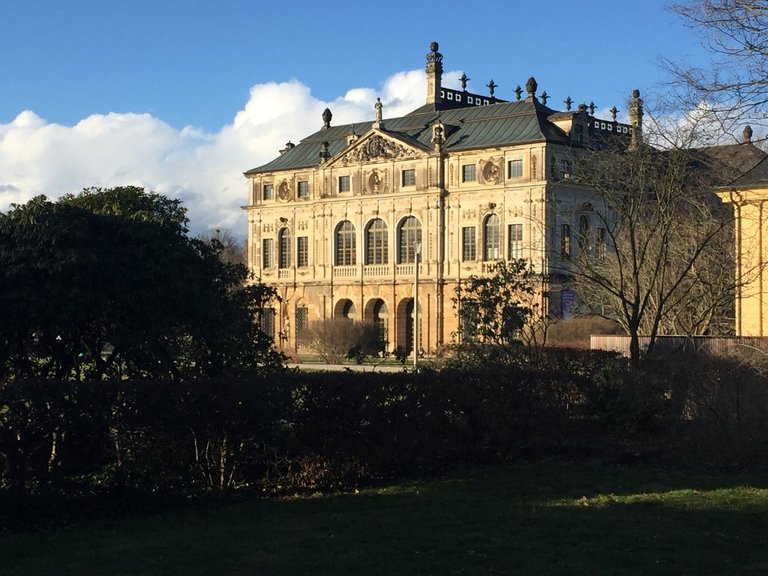 | 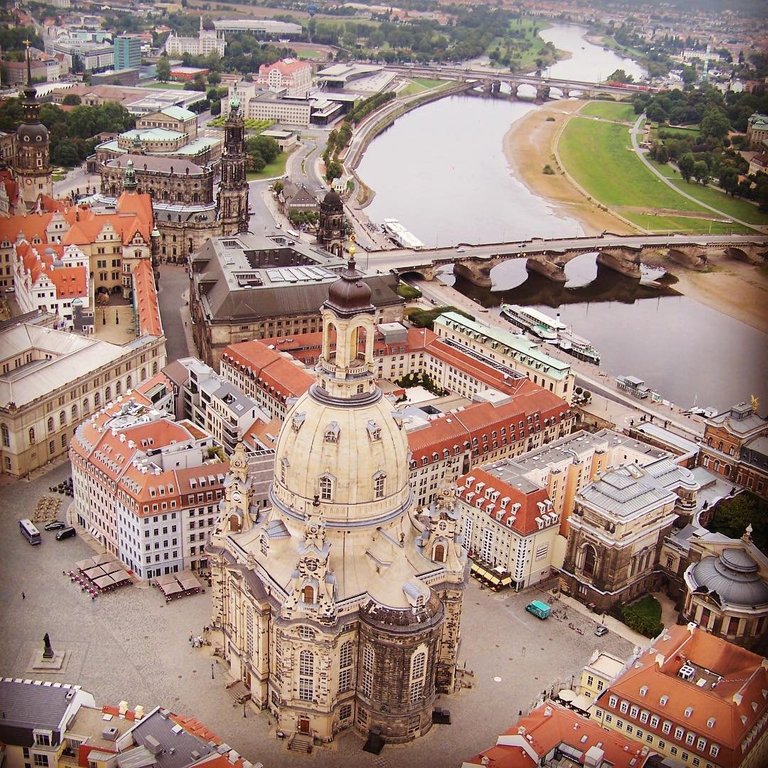 | 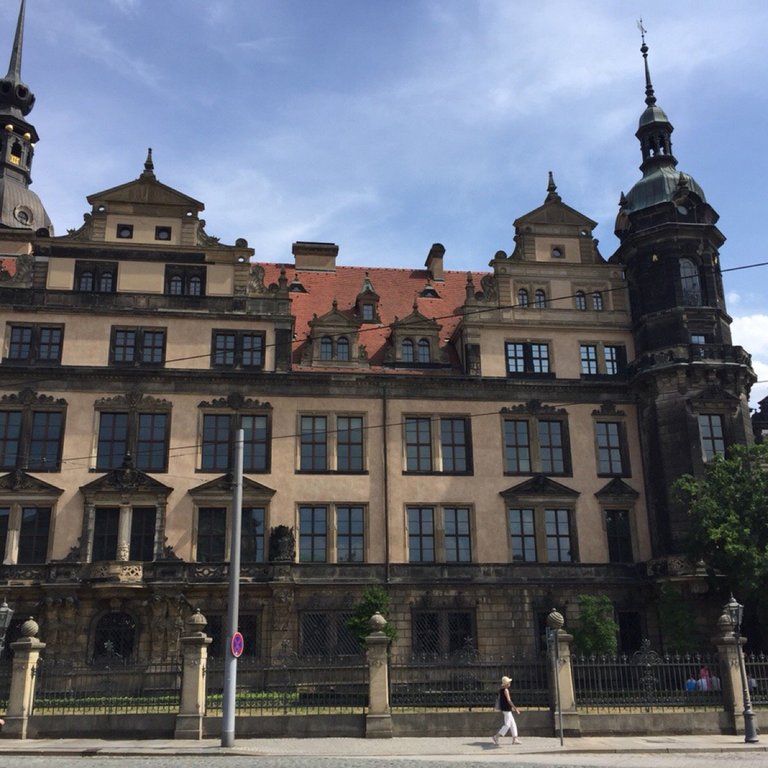 |
